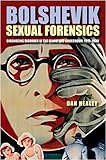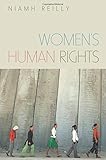Support H-Net | Buy Books Here | Help Support the NBN and NBN en Español on Patreon | Visit New Books Network en Español!
- African Studies
- African American Studies
- American Politics
- American Studies
- American South
- American West
- Asian American Studies
- Australian and New Zealand Studies
- British Studies
- Canadian Studies
- Caribbean Studies
- Central Asian Studies
- Chinese Studies
- East Asian Studies
- Eastern European Studies
- European Politics
- French Studies
- German Studies
- Iberian Studies
- India Studies
- Indian Ocean World
- Iranian Studies
- Irish Studies
- Israel Studies
- Italian Studies
- Japanese Studies
- Korean Studies
- Latino Studies
- Latin American Studies
- Mexican Studies
- Middle Eastern Studies
- Native American Studies
- Pacific Studies
- Polish Studies
- Russian and Eurasian Studies
- Southeast Asian Studies
- South Asian Studies
- Turkish Studies
- Ukrainian Studies
- Western European Studies
- World Affairs
- Animal Studies
- Anthropology
- Archaeology
- Business, Management, and Marketing
- Media
- Critical Theory
- Disability Studies
- Drugs, Addiction and Recovery
- Education
- Economics
- Finance
- Geography
- Gender Studies
- Genocide Studies
- Higher Education
- Human Rights
- Journalism
- Language
- Law
- LGBTQ+ Studies
- National Security
- Philosophy
- Policing, Incarceration, and Reform
- Political Science
- Politics & Polemics
- Public Policy
- Sex, Sexuality, and Sex Work
- Sociology
- Sound Studies
- Sports
- Urban Studies
- Big Ideas
- Celebration Studies
- Co-Authored
- Cover Story
- Historical Materialism
- History Ex Silo
- Invested Investor
- Landscape Architecture
- Mormonism
- NBN Book of the Day
- NBN Seminar
- Postscript
- Practical History
- Preparing for Life After Grad School
- Psychology and Climate Change
- Interpretive Political and Social Science

Sep 26, 2012
Bodies in Doubt
An American History of Intersex
Summary
In August of 2009, the South African runner Caster Semenya won the 800 meter final in the world Championship leading by one minute. "Muscles bulging and triumphant hand aloft," the news reported, "she crossed the line way ahead of the rest of the field and ran straight into accusations that she was far too strong, too fast and, to be blunt, too masculine to be a woman." The International Association of Athletics Federation requested that Semenya undergo gender testing. For months, Semenya and the IAAF awaited reports from a gynecologist, an endocrinologist, a psychologist, an internal medicine specialist, and an expert on gender. When the results were finally released, news headlines ranged from "Caster Semenya is a hermaphrodite with no womb or ovaries" in the Sydney Daily Telegraph to Salon.com's claim that "Castor Semenya is not a hermaphrodite...but intersex." This news must have come as a shock to Semenya. Today we are going to talk to Elizabeth Reis, author of Bodies in Doubt: An American History of Intersex (Johns Hopkins University Press, 2009). A women's and Gender Studies scholar and Historian at the University of Oregon, Reis tells us about the history of those who are of ambiguous sex. From early America, when people looked at doubtful bodies as bodies that created legal and religious concern to the 19th century, when physicians began to take over the classification and management of bodies lacking a clear gender identity. This is a remarkable book. And we are glad to have Elizabeth Reis on our show today.
The shock with which Semenya - and others like her -- must have received this news - as well as the debate over the proper nomenclatura concerning individuals who show sex characteristics of both men and women are among the fascinating topics raised by Elizabeth Reis' book
Reis, a professor of Women's and Gender Studies and History at the University of Oregon, analyzes the history of bodies of doubtful gender from early America to the present. Her narrative illustrates how anomalous bodies were initially associated with monstrous births, of concern mostly to legal and clerical authorities. In the 19th century, physicians began to take over the classification of doubtful bodies. Soon, they were involved not only in identifying the sex of their patients' bodies but also in altering doubtful bodies to create gender certainties. Reis traces the rise and fall of medical treatment protocols for the intersex. She concludes with a thoughtful chapter on naming in which she discusses the move away from the term hermaphrodite - which evoked images of mythical creatures and was considered derogatory. Hermaphrodite was followed by the term intersex. But to many, this term seemed too sexualized. It also suggested the existence of a third sex - when many really only wanted two. Recently, physicians have begun to use Disorders of Sex Development [DSD] to refer to the intersex condition. The Disorders in DSD, however, pathologizes the condition. Reis herself suggests Divergence of Sex Development as a more neutral option. If nothing else, the evolution of terminology itself illustrates how sensitive and political the naming and categorizing of gender is. Bodies in Doubt is a terrific contribution to our understanding of sex, gender, and the creation of our two gender system. If you are as fascinated with these issues as I am, you must read this book.






























































































